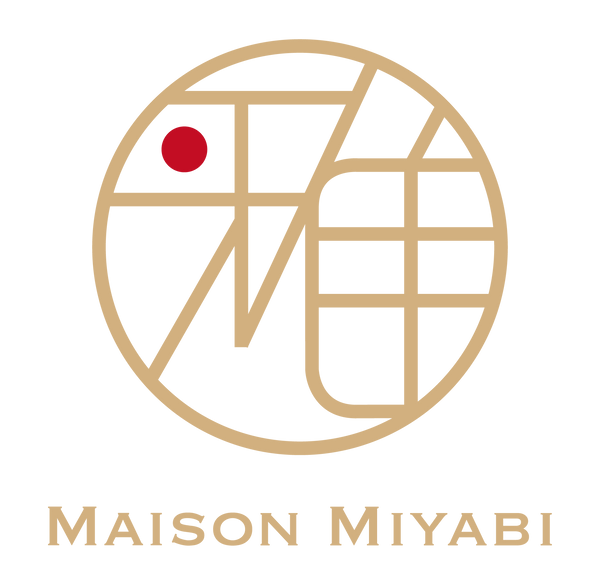Obi, Kimono, Washi, Kutani, Furoshiki, Kyoto, Kanazawa...
At MAISON MIYABI, Sari (the Founder) sources materials directly from all over Japan. Here, we present authentic materials that are selected with care.
Obi
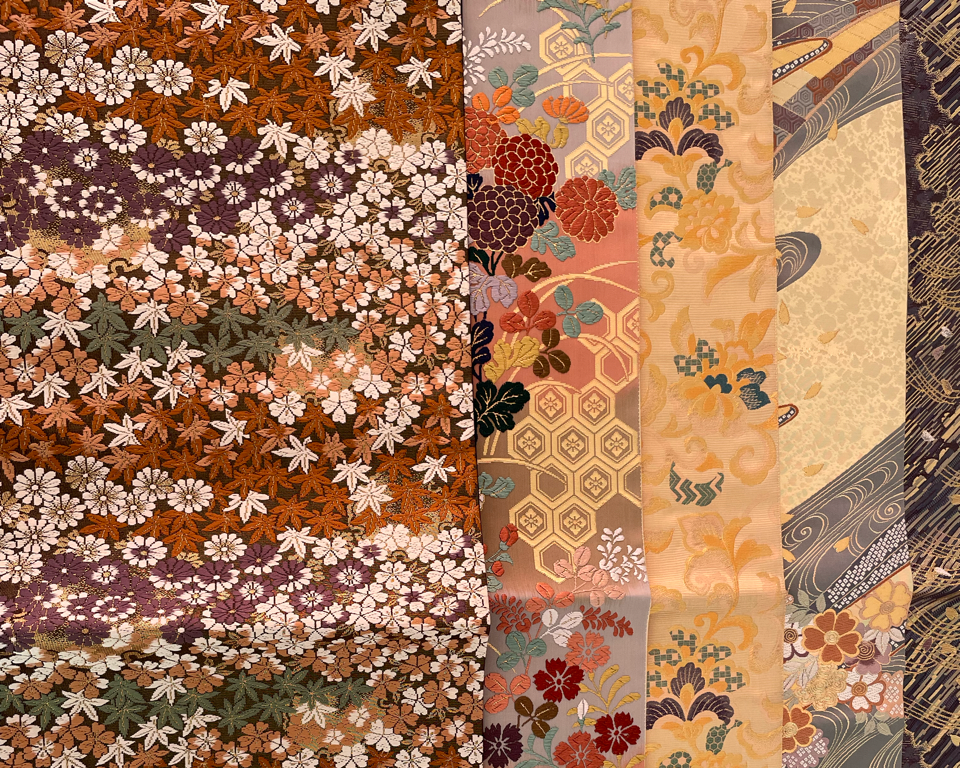
What is the Obi?
An “Obi” is a wide belt or scarf worn with traditional Japanese garments such as the kimono. It can be highly decorative, often featuring intricate patterns or designs.MAISON MIYABI only uses the silk Fukuro Obi (袋帯), a richly decorated and ornate obi used for special occasions. These characteristics: Wide, often with patterns on both sides. It is richly knotted and decorated, giving it a luxurious look.
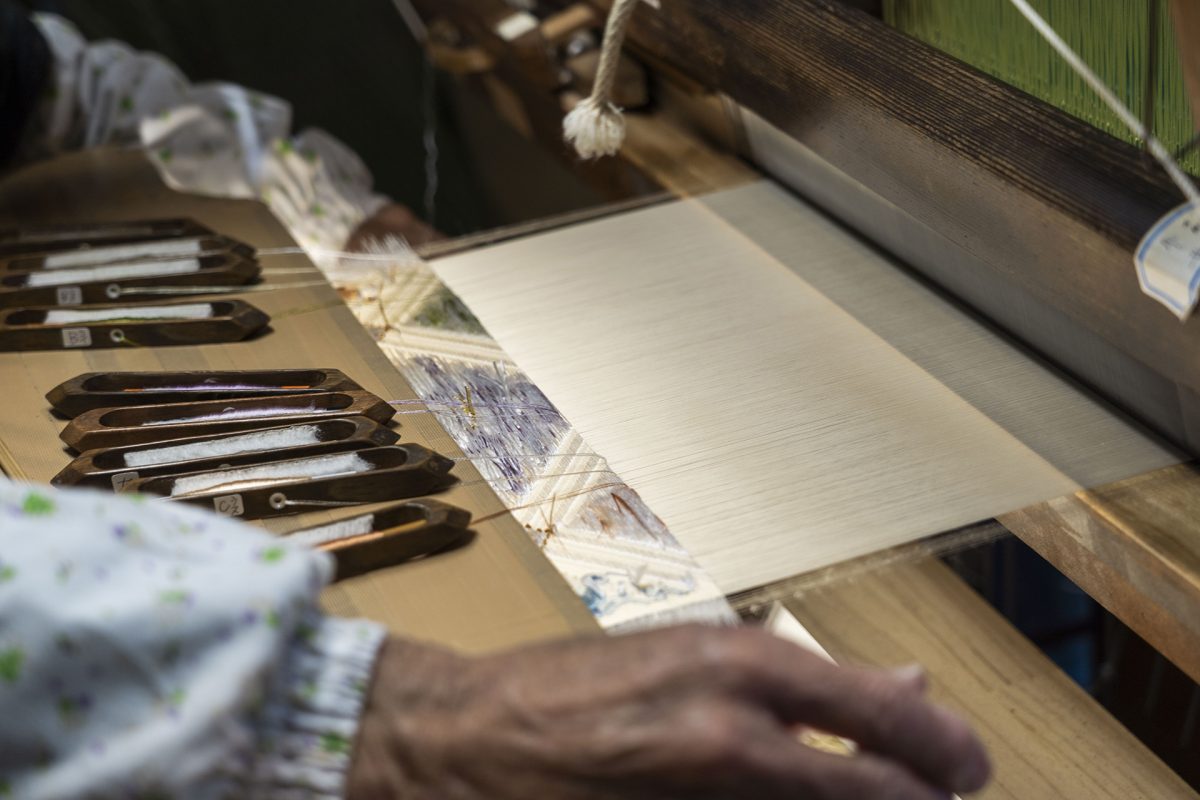
Where does the Obi come from?
MAISON MIYABI sources from all over Japan.
Most of our Obis are vintage Nishijin-ori from Kyoto. Nishijin-ori is a high-end silk weaving technique that requires a lot of time and effort, as the pattern is created by intricately weaving the first dyed threads, rather than dyeing them after weaving. The unique weaving technique is a hallmark of Nishijin, which has been passed down since the Heian period (794-1192), and weavers are constantly striving to improve their creativity and expression.
Kimono
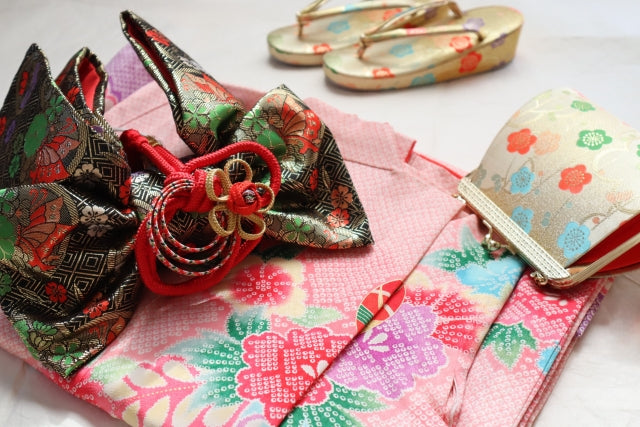
What is Kimono?
The Kimono is one of Japan's most treasured cultural assets. It is a traditional Japanese garment. The authentic Kimono is made of silk, and there are several production areas throughout Japan.
Although it is no longer worn on a daily basis, it can still be worn at important events such as coming-of-age ceremonies and weddings, and remains a tradition that is highly valued by the Japanese people.
In Japan, lucky symbols are very important. The patterns on kimonos and belts are not only aesthetic and seasonal; they also carry meaning and express wishes for happiness for those who wear them.
The Obis and Kimonos offered by MAISON MIYABI are selected not only for their quality, but also for their lucky patterns. The meaning of each pattern is indicated on the product page, so we invite you to discover it!
Washi
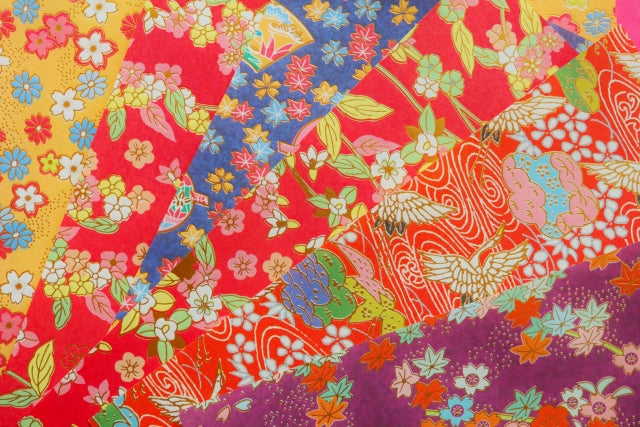
What is Washi Yuzen?
Like the yuzen dyeing of kimonos, Washi yuzen is a type of Japanese paper from Kyoto that has been beautifully dyed with traditional Japanese patterns using a palette of colors.
The most representative examples are those that use curves to create picturesque patterns of landscapes, plants, flowers, birds, and boats, and are characterized by a precise and elegant variety of colors.
Kyoto
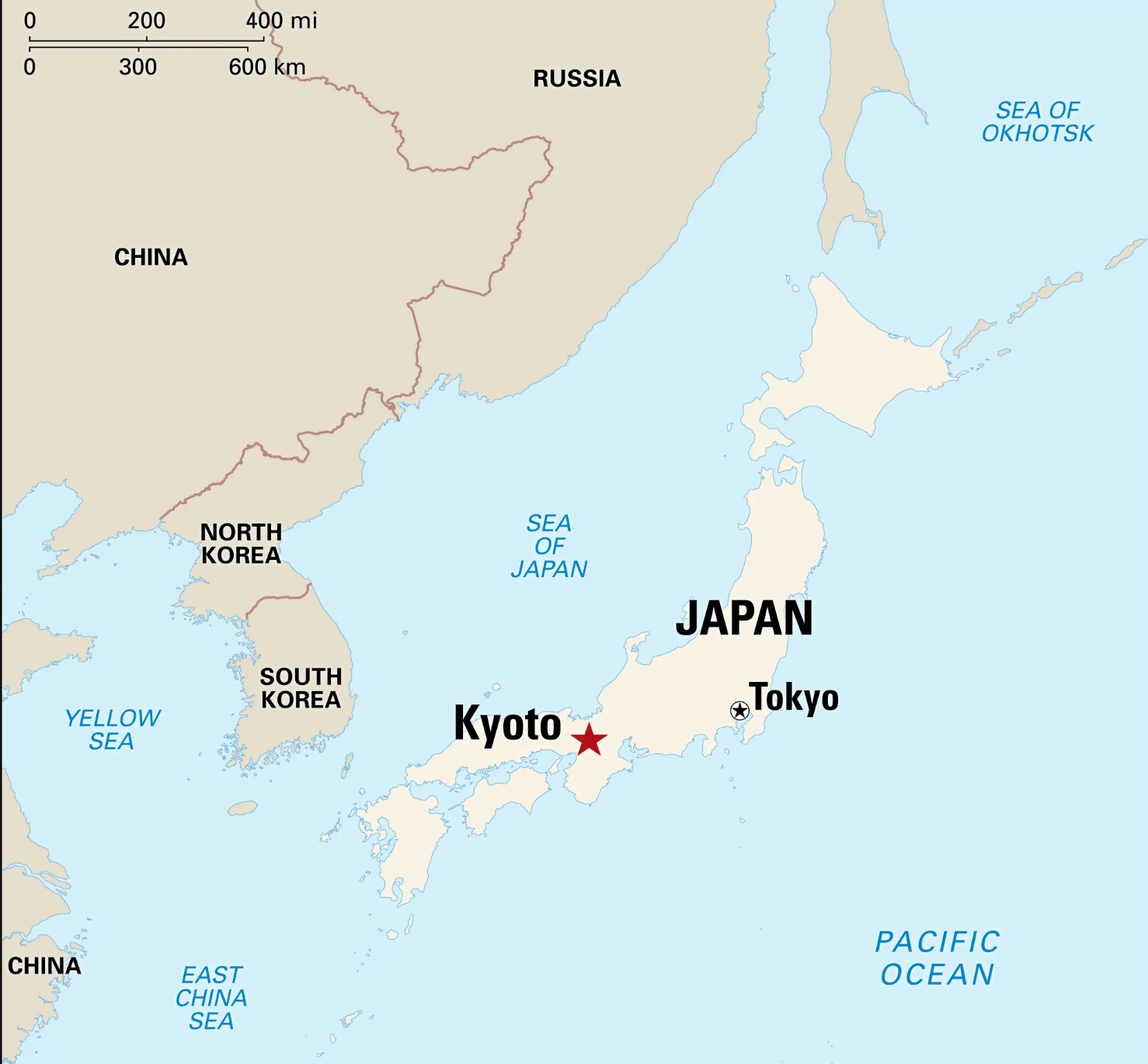
Where is Kyoto?
Kyoto Prefecture is located in the center of the Japanese archipelago, with the northern part facing the Sea of Japan. It was the capital from 794 to 1869 and is home to many shrines, temples, gardens, imperial palaces, and traditional Japanese houses.
Kutani-yaki
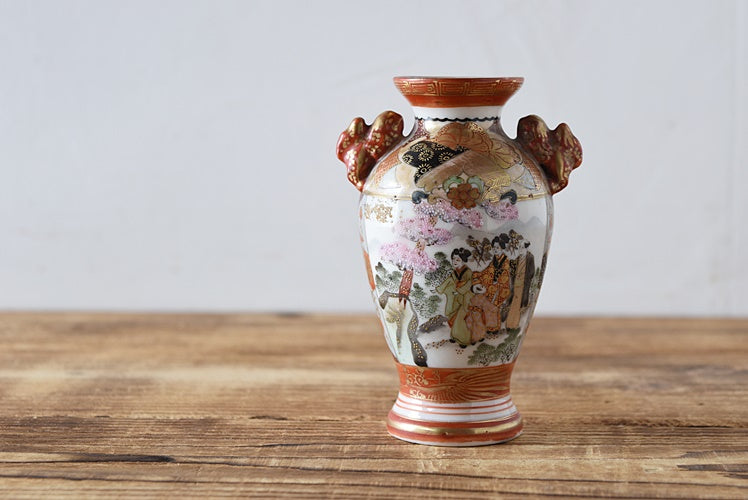
What is Kutani-yaki?
Kutani-yaki (Kutani porcelain) is representative of Ishikawa Prefecture in Japan. With a particularly colorful style, which rarely leaves a part of the surface without color, Kutani porcelain is unique. The five bright colors green, yellow, blue, purple and red, which are the most commonly used, are called Kutani Gosai.
The true quality inherent in Kutani lies in the multi-colored images glazed with glaze. It is distinguished by the use of heavily interwoven Japanese pigments, Gosaite, and bold outlines. The uniqueness of the Kutani style is undoubtedly the way in which the glazes are presented with an even greater brilliance due to the sober coloring of its bluish background. Kutani porcelain items that have red patterns with gold ornaments are called Kinrante specifically.
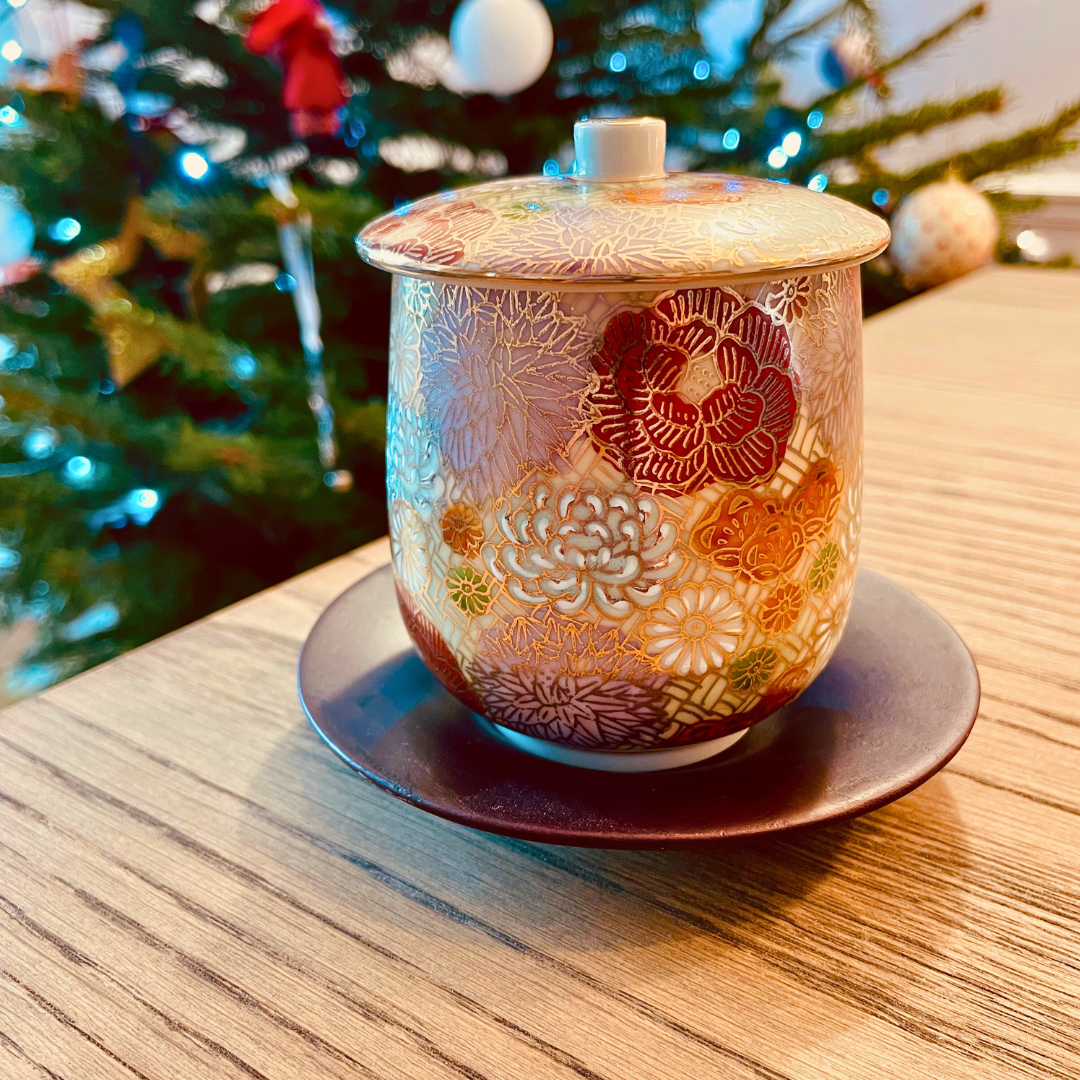
Kutani for the Scented candle at MAISON MIYABI
Japan has many areas where beautiful porcelain is produced, but MAISON MIYABI is particularly drawn to Kutani porcelain. The unique bright colors, the use of gold leaf (Kanazawa, where Kutani porcelain is produced, is also famous for its gold leaf work), and the originality of the designs are all very appealing. MAISON MIYABI is proud to be able to present these beautiful pottery pieces in the form of candle holders.
Kanazawa
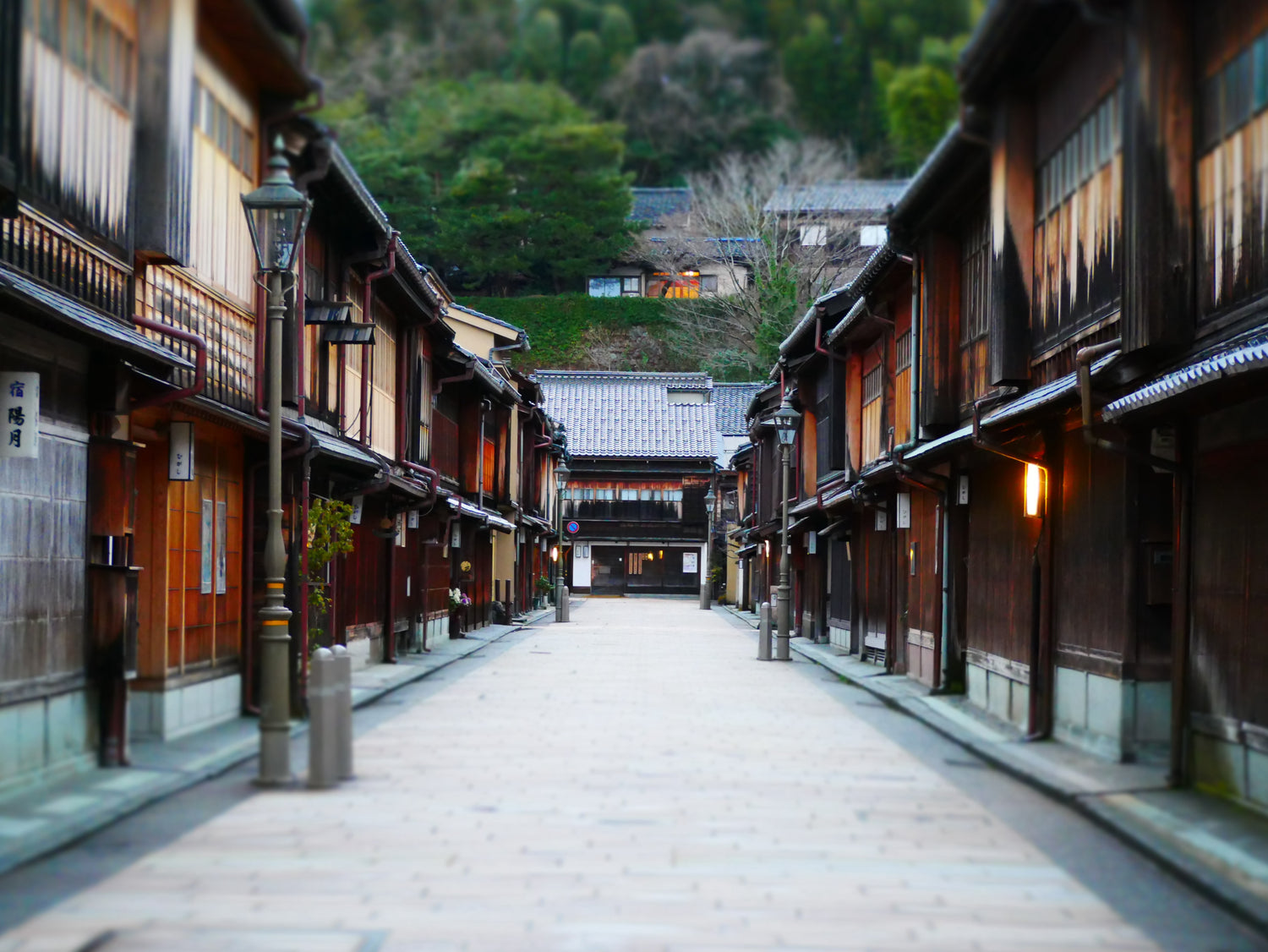
What's it like, Kanazawa?
Kanazawa is located almost exactly in the middle of Honshu. The straight-line distance from major cities is approximately 300 km for Tokyo, 250 km for Osaka (Osaka-shi), and 150 km for Nagoya (Nagoya-shi). Kanazawa flourished as the castle town of the Maeda family of the Kaga clan, and traditional crafts such as Kaga yuzen, Kanazawa leaf, and Kutani ware, as well as traditional performing arts such as Noh and Kaga manzai, were passed down from generation to generation. During the reign of Maeda Tsunanori, the fifth lord of the domain, Kaga was recognized as the "prefecture of calligraphy" for encouraging learning by collecting famous scholars and valuable books from all over Japan. The city has been spared from wars and major disasters, and many of the beautiful townscapes from the feudal era still remain today and are a valuable asset to the city of Kanazawa.
Furoshiki fabric
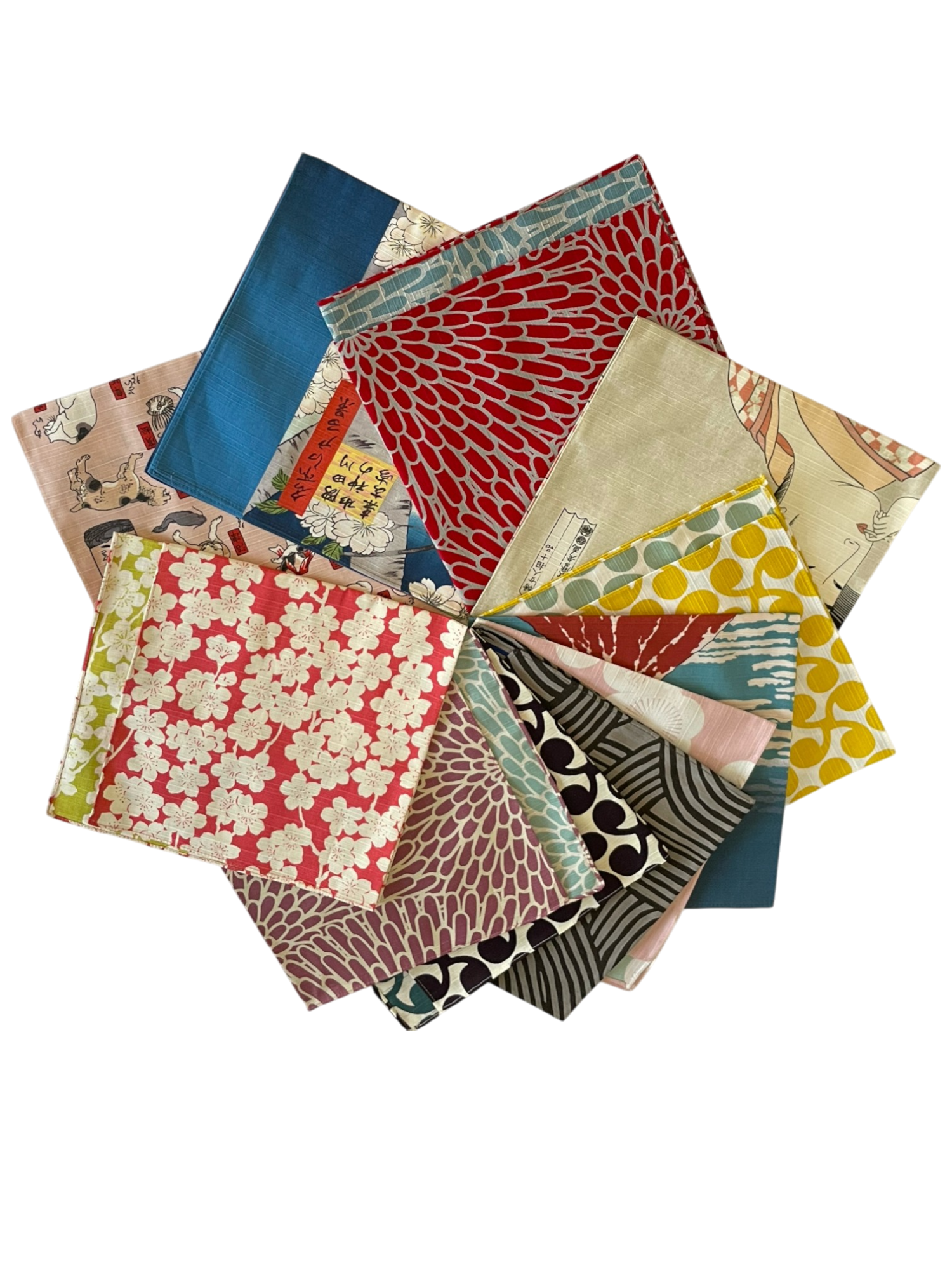
Story of the birth of Serviette Furoshiki
Do you know Furoshiki? It is a beautifully dyed fabric, used to wrap gifts without waste and to transport objects. Since time immemorial, it has been good manners in Japan to use things with care and for a long time, and Furoshiki was a way to avoid excess waste.
This time, MAISON MIYABI offers you to use these beautiful and durable 100% cotton fabrics found in Japan for table napkins! This fabric is made by Yamada-seni, a long-established textile company in Kyoto.
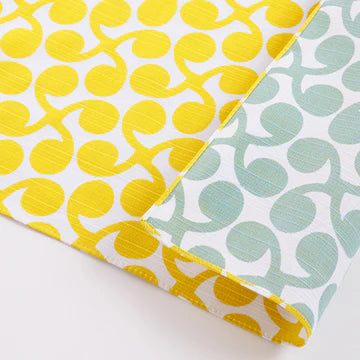
What is the Isa Monyo (伊砂文様)?
Isa-Monyo Laboratory has created many unique patterns and designs since the 1940s. It has over 3,000 panel designs cut from Kakishibu (persimmon tannin). The Isa Monyo series of fabric prints by Serviette-Furosiki are double-sided and use the same pattern. However, each side has a unique color variation. No two fabrics are exactly the same. Shantung, which is one of the most popular cottons, is strong enough to carry heavy items. The texture of the fabric softens with each wash. Each Isa-Monyo is unique because it is handmade by an artisan.
